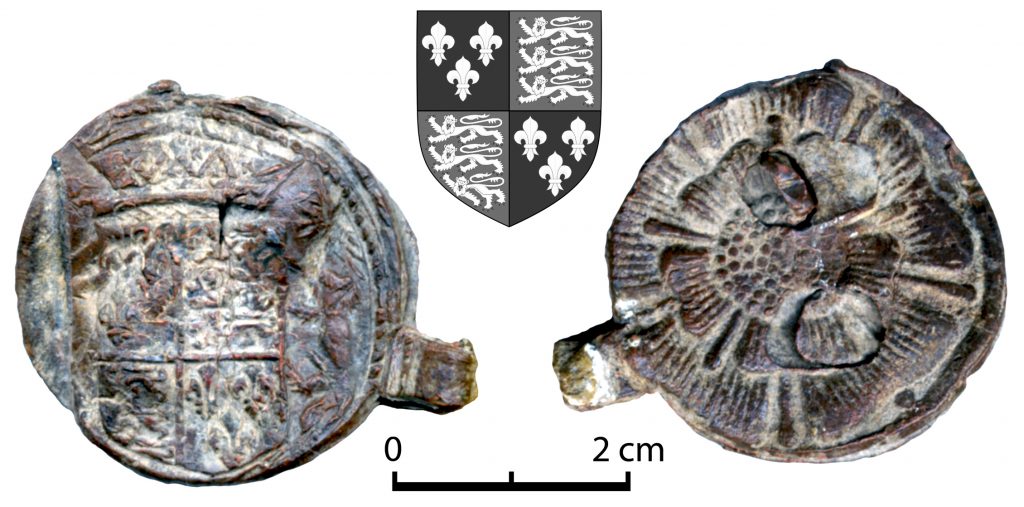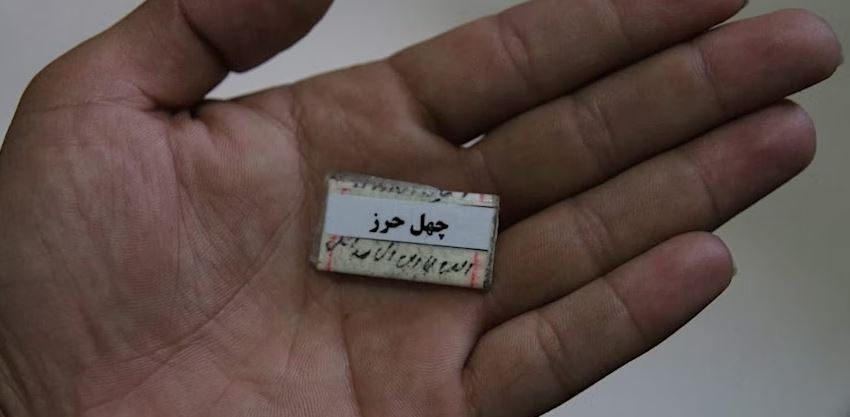In December 2010, we were shocked and saddened to hear of the death of Geoff Egan, a former President of SPMA and serving Vice-President. To honour his work we hold a memorial lecture each year. Furthermore to read some of the kind tributes Geoff’s many friends and colleagues offered in the Geoff Egan: a tribute, published in Post-Medieval Archaeology 45/2 (2011). Geoff was a man whose influence on medieval and post-medieval artefact studies has been, and will continue to be, very considerable and far-reaching.
The Geoff Egan Memorial Lecture.
6th December 2023

The Unexpected Side of English Cloth Seals: 16th- to 17th-Century Finds in Central and Eastern Europe: Professor Maxim Mordovin, Department of Hungarian Medieval and Early Modern Archaeology, Eötvös Loránd University
Cloth seals may be the “most Geoff Egan-topic”. He was the very first scholar who had started to deal with them on the scientific and interdisciplinary level, involving written sources and collecting all available data, including continental Europe. The last three decades show an enormous growth of the resources on cloth seals, both in print and online. These changes are equally valid for the Western European countries as well as for Central and Eastern Europe. The amount and the quality of the available information and the instruments of modern communication reveal some unexpected tendencies previously hidden by the deficit of data. One such interesting discovery is the situation with the English cloth seals all across the continent.
The role and the popularity of the English cloth in the late Middle Ages and Early Modern times is well known from the contemporary written sources. As the most popular among the high-quality fabrics, the English textiles by the end of the 16th century were widely traded to Poland, Hungary and the Ottoman Empire. The archival documents called it simply lundish, distinguishing several quality and colour groups of it. From Geoff Egan’s studies, we know that the better quality English cloth meant to be sold abroad was checked and sealed by the alnage office in London. The thousands of cloth seals from the UK and continental Europe prove this practice. The first interesting fact about all these ‘English-seals’ is that the known types in England and – in our case – in Central Europe do not coincide. The distribution of local types also shows some interesting tendencies. This paper presents the preliminary results of the evaluation of more than 500 English cloth seals found in the Carpathian Basin (Hungary, Slovakia, Romania, Serbia, and Croatia) and Ukraine.
Event Details:
7.00pm – 8:00pm: Lecture: The Unexpected Side of English Cloth Seals: 16th- to 17th-Century Finds in Central and Eastern Europe: Professor Maxim Mordovin
Location update: Sadly with recent weather the Derby Museum of Making has flooded so this event is now being moved to Wardwick Event Space, The Strand, Derby, DE1 1BS. There will be parking available at the closest carpark, the ParkSafe at Bold Lane, DE1 3NT and Prices for parking will be capped at just £2.70. At the venue there is an accessible/step free entrance and accessible toilets.
Free of charge, booking essential. BOOK HERE
Past Lectures
Dr Rachael Kiddey: Archaeology as Sustainability

Tue, 6 December 2022
About this event
Drawing on a decade of collaborative contemporary archaeological fieldwork with marginalised people, this lecture explores what archaeology and cultural heritage studies can contribute to efforts to make the world a fairer and more sustainable place. Currently, we are surviving (to different degrees) in a climate which is increasingly politically and environmentally hostile. Research discussed in this lecture was driven not by the thought that we must ‘peg’ archaeology to something relevant for the sake of the discipline (or our jobs) but recognition that revolutionary potential of the past cannot be over-estimated, as the future depends upon how everything which has come before is assimilated and explained (Weil, 2001).
My doctoral research involved developing pioneering methods for conducting community archaeology with homeless people in Bristol and York, U.K. (Kiddey, 2017). Towards the end of that project, in 2014, I came to meet more and more people who were homeless in the U.K. but originally from places such as Afghanistan, Eritrea, Iraq, Somalia, and other countries ravaged by war and poverty. I came to think of homelessness as the domestic branch of a much broader story of human displacement, a centuries’ old and still unfolding story of dispossession and theft: a story undeniably a legacy of European colonialism and contemporary capitalism.
Between 2016 and 2022, I held two postdoctoral positions at the School of Archaeology, Oxford, during which I undertook a range of community heritage projects with diverse groups of forcibly displaced people in squats, on the street, and in day centres in Sweden, Greece, and the U.K. The people involved were of mixed age (12-58 years), mixed gender and sexual orientation, different educational, class, and religious backgrounds; they originally came from 8 different countries across Asia, the Middle East, North Africa, and the Balkans and spoke 10 native languages; they had varied reasons for having fled their homelands. Yet within and across each group, individuals spoke beyond the social and cultural boundaries which separated them and found multiple commonalities in the experience of displacement. By inviting participation from anyone who wished to take part in a suite of complementary cultural heritage methods, I intentionally sought to create an activist community that would advocate for displaced people. We became a collective called Made in Migration (Kiddey 2021 & 2022).
Finding solidarity in similar lived experiences of displacement, the strength of the project lay in its ability to harness im/material encounters of life in forced displacement using a variety of established archaeological and cultural heritage documentary methods – photography, semi-structured interviews, and iterative deep mapping. As a collective, we applied data to produce two public heritage exhibitions, one virtual and one live, to challenge head on xenophobic narratives driven by reactionary populism. The explicit power of this community lay in our non-hierarchical methods of engagement and the confidence that this gave us to collectively tackle the racist homogenisation of displaced people by exposing the complex social and cultural backgrounds of those seeking refuge in contemporary Europe. In complicating populist narratives, we drove home the historical context and diversity of people and places – landscapes, borders, legal categories of citizenship, conflict – involved in global displacement, and we linked these with entwined ecological devastation, an increasing ‘push factor’ globally. Simultaneously, the project functioned as a therapeutic intervention for everyone involved, through reimagining themselves and others as mobile global citizens, ‘belonging’ in our right to peaceful and fulfilling lives. Made in Migration also tackled some of the problems inherent in undertaking political engagement in a hyper-mobile world by creating a virtual and, at times, sited-together archaeological community, from otherwise disempowered individuals, scattered by geopolitics and rendered unequal by accident of place of birth and associated privileges (or lack of). Made in Migration reasserted basic human needs and motivations, and our joint responsibility towards and reliance upon more-than-humans and planet Earth.
Location
Kelham Island Museum Alma Street Sheffield S3 8RY
Tickets
Free but space is limited book through Eventbrite by clicking here.
